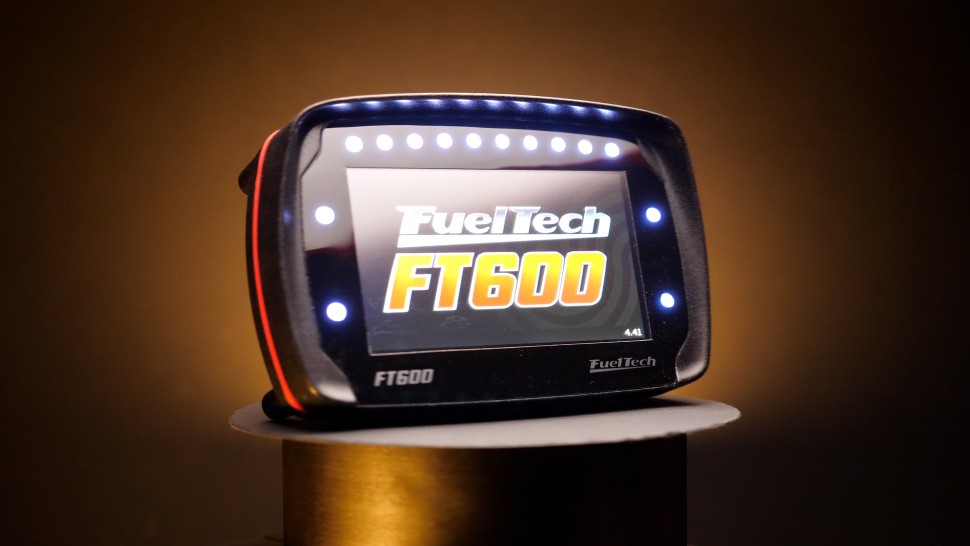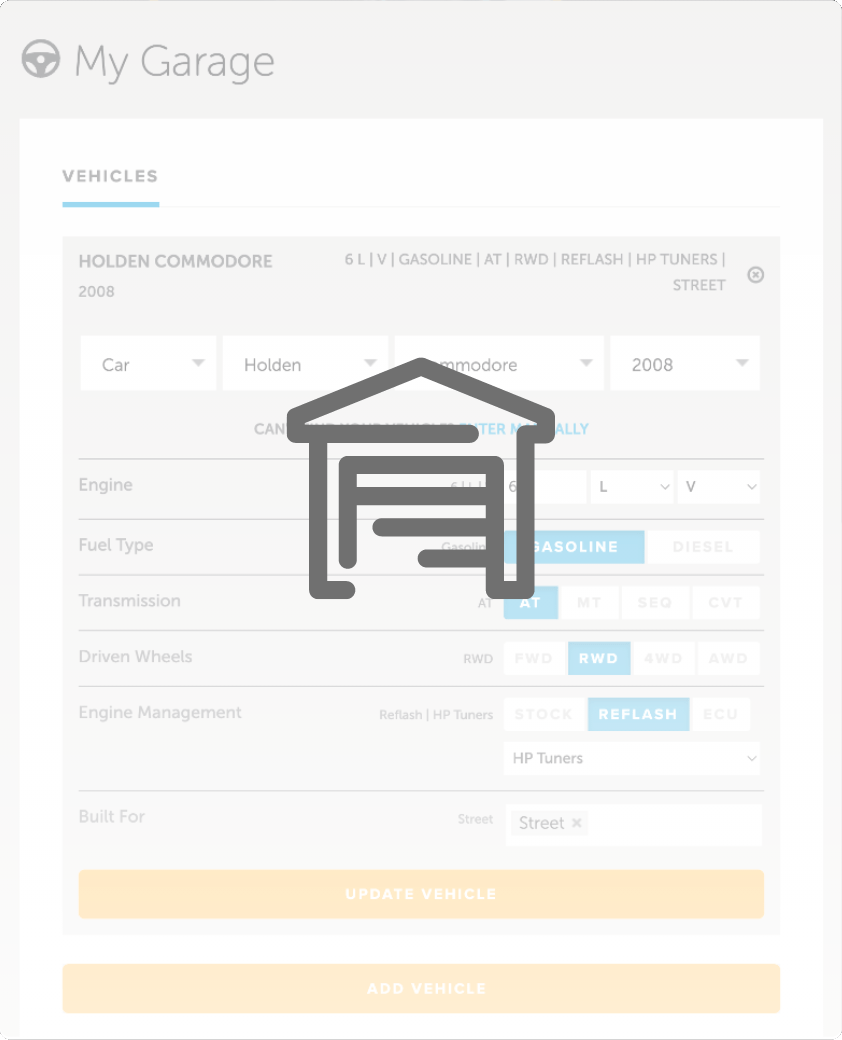| 00:00 |
The simplest and easiest way to visualize flow separations at a club level is to use what is known as tufts testing.
|
| 00:07 |
Essentially, this involves sticking many short lengths of string over the region of interest and observing them with a camera as we drive around the track.
|
| 00:16 |
Tuft testing is cheap, works at low speeds and can be used to resolve flows at any point on track using camera footage.
|
| 00:23 |
You may have also heard of an alternative technique that is commonly used in Formula One called FlowViz paint.
|
| 00:30 |
This is where we paint a fluid onto the car which moves with the air and sets in place showing lines of flow direction.
|
| 00:37 |
The reality is, while FlowViz is simple and quick in theory, the details of making the paint and interpreting the results can lead to large amounts of error being introduced.
|
| 00:48 |
Tuft testing, on the other hand, is much more straightforward and as such is more appropriate at the club level.
|
| 00:54 |
To set up a tuft test, we need a few things.
|
| 00:58 |
Firstly, string.
|
| 00:59 |
We want a twine type string that's colored to stand out against the bodywork of the car.
|
| 01:05 |
For example, darker bodywork requires light colored twine and for light bodywork, black twine can work well.
|
| 01:12 |
Colored twines can do well on white too.
|
| 01:15 |
The key thing is just to find a combination that shows up really well on camera so we can catch it effectively.
|
| 01:22 |
We'll need tape to stick it down.
|
| 01:23 |
Ideally, something rigid that we can apply the tufts to and then stick it on and we don't want to leave too much residue.
|
| 01:30 |
Aluminium tape works great for this application but is very expensive.
|
| 01:35 |
Often regular clear tape works well and is much cheaper.
|
| 01:38 |
Just make sure you've got it stuck down well.
|
| 01:41 |
Painter's tape is also a decent choice.
|
| 01:44 |
Finally,, we'll need a camera.
|
| 01:46 |
Any action camera will do, but 4K and 60 -120fps are great features to have to look at the tufts in more depth.
|
| 01:56 |
To prepare for the test, we should first cut our tufts to length.
|
| 02:00 |
We're going to need a lot of tufts, 1 per 75mm or so of tape.
|
| 02:05 |
And in a regular tuft test, we might do 4 rows of tape if we're doing something like a rear wing.
|
| 02:10 |
We can either apply these tufts onto single pieces of tape for flexibility of tuft placement, although this means we have to cut many small pieces, or we can apply them in tape strips to make life a little bit easier when putting them on the car.
|
| 02:26 |
Often people cut their tufts too long.
|
| 02:28 |
We don't want to go crazy here.
|
| 02:31 |
Realistically, our tufts shouldn't be longer than about 50mm.
|
| 02:34 |
If we're too much longer than this, the tuft will start to flap and oscillate, which can make it hard to see when the airflow is separating.
|
| 02:41 |
I generally target a free length of 30mm with a relatively thin twine for the majority of our testing.
|
| 02:47 |
Once we've cut our tufts to length, we then need to affix them to our pre-cut bits of tape and apply them to the car.
|
| 02:53 |
Make sure there's no tufts sticking out the front.
|
| 02:56 |
We don't want to disturb the air ahead of the tuft any more than we absolutely have to.
|
| 03:02 |
Next, up, we need to mount our camera.
|
| 03:03 |
In the case of rear wing testing, we should be sticking it to our boot looking up.
|
| 03:09 |
If we're testing the rear windscreen, we should be putting it on the boot looking forwards.
|
| 03:13 |
Front bumper work is a little bit trickier and we might have to get creative with where we mount the camera to make sure we aren't disturbing the airflow with the camera itself.
|
| 03:22 |
If we can get it high and forwards, that would be best.
|
| 03:26 |
If we're doing stuff on the side or the back of the car, you either need a huge mount or a chase car to film the tufts from outside.
|
| 03:35 |
This can be quite tricky at the higher speeds on track though, particularly if we want to look at mid-corner performance.
|
| 03:41 |
Another thing to remember with tuft testing is to have an objective for what we're planning to test.
|
| 03:46 |
I see people post tuft tests of things like the area just behind the front wheels often on the internet.
|
| 03:52 |
That's a fun visual, but we didn't learn anything.
|
| 03:55 |
We've just seen that the air behind the front wheel is disturbed, but we already knew that.
|
| 04:00 |
The key is to have an objective, like for example, testing what angle the rear wing is stalling at, checking if we have rear wing end plate separations mid -corner, actionable things like that.
|
| 04:12 |
For example, if we have a rear wing that's separating badly, we can decrease the angle to get more performance.
|
| 04:18 |
If we have a rear windscreen that's separated, we can consider vortex generators or a downwashing roof spoiler to help cure it.
|
| 04:25 |
This is what we should be using tuft testing for, not simply seeing what's happening.
|
| 04:31 |
With tuft testing, it's also worth noting that by putting tufts on the surface, we are increasing the surface roughness, and we may end up tripping the boundary layer from laminar to turbulent.
|
| 04:42 |
This will obviously cause the results for flow attachment to vary a little from when the tufts aren't there, so this is worth bearing in mind.
|
| 04:49 |
That covers the key points behind tuft testing, so let's quickly recap.
|
| 04:53 |
Tuft testing is a simple, low-cost method for visualizing airflow and identifying flow separation on vehicles by attaching tufts to the car's surface and recording their movements with a camera.
|
| 05:04 |
Key setup requirements include choosing highly visible string colors, using secure tape, and mounting a camera at a location that doesn't interfere with the airflow.
|
| 05:13 |
Proper tuft length of around 30-50mm prevents excessive flapping, allowing clear airflow visualization, while pre -setting objectives for your test ensures you gain useful insights.
|
| 05:25 |
It's also important to remember that tufts slightly affect surface roughness, potentially altering flow behavior, so make sure this is considered when interpreting the results.
|





